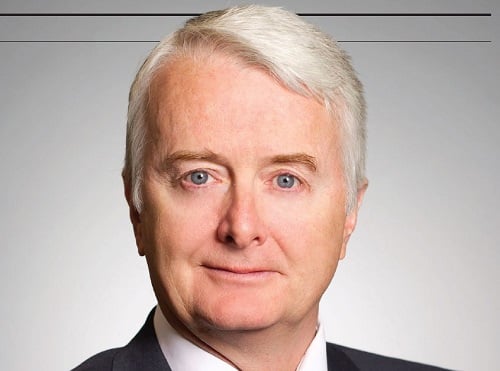TD Asset Management’s Doug Warwick outlines what goes into building a mutual fund with a 30-year track record

It’s been a tough few years for active managers. As stock performance has made passive ETFs a safe bet, some investors had started to question the worth of active management. Those naysayers – Warren Buffett the most high-profile example – might have a different opinion now, though, as volatility has returned to the markets.
Tracking the index doesn’t do much good when stocks take a dive, as they did in early February, and it’s in this environment that active managers can really shine.
Doug Warwick has overseen the TD Dividend Growth fund for the past 25 years. A quarter of a century is a long time in any job, but especially in the mutual fund business. The fund marked its 30th anniversary last September, which is another rarity, but there are solid reasons for its longevity, as Warwick explains.
“My tendency is to not buy companies that are cyclical, where possible,” he says. “So if you look through the portfolio, we are light on materials relative to the TSX. We are still a little light on energy and have a heavy emphasis on the financial sector. I think even the worst-performing bank in Canada has outperformed the TSX over almost any time period. And I believe the Canadian banks are one of the few things that have outperformed Warren Buffett.”
The fund’s investment universe is almost exclusively Canadian, which has served it well over the long term, but it comes with certain limitations.
“The trouble with those wonderful big tech names in the US – and I wish we owned some, in hindsight – is that the multiples are very high, and only now are they starting to pay dividends. We have a value bent, so it’s difficult for us to pay 30, 40 or 50 times earnings for a stock.”
Focusing on financials
Because the TD Dividend Growth fund is principally made up of Canadian stocks, it’s not surprising that it has a heavy financials weighting. The banks have provided solid long-term returns, but Warwick would still like to see them shift their business somewhat.
“I would really prefer if the Canadian banks would focus less on residential mortgages and more on business and commercial loans,” he says. “Mortgages make up half of a bank’s balance sheet and are probably 22% of a bank’s profitability.”
Although the Canadian banks have strong fundamentals, Warwick’s concern is borne from past events. This year is the 10-year anniversary of the financial crisis, and as he explains, the causes of that collapse aren’t hard to identify.
“Mortgage brokers in the US were doing no money down, very low teaser rates and generating as many of those mortgages as they could,” he says. “Then they were bundling them up and flipping them to financial institutions, who were holding their noses and syndicating that to other people.”
Such practices then became a contagion, which put the global financial system under serious threat. And because the US banking system was hugely under-capitalized, a domino effect ensued across the globe.
“Every time a bank sold assets to get their capital ratios onside, prices would fall and more assets would have to be sold,” Warwick says. “It was a very scary spiral. My mistake then was not moving a little bit more in cash. From my perspective, Canadian banks were fine, but they were carried down, even though 2008 was the third best earnings year on record.”
The Canadian banking system was held up internationally as an example to follow in the aftermath of the crisis, and the Big Six have gone from strength to strength ever since. Capital ratios are much less skewed in the US, too, and that’s why Warwick doesn’t foresee a repeat of the 2008 calamity anytime soon. That’s not to say there aren’t headwinds investors need to keep an eye on, but generally he is optimistic about the current landscape.
“The provinces and the feds in Canada have been very concerned about the housing market and have been making progressively tighter changes to mortgage rules for several years now,” he says. “But I think you have to step back and consider that half of Canadians own their home outright, and the other half who have a mortgage have 40% equity in their home. So on average, the Canadian homeowner is in pretty good shape. The debt-to income ratio is at record highs, but so is the consumer net-asset-to-income ratio.”
The return of volatility
For that reason, Warwick doesn’t believe recent volatility in the markets is a major cause for concern. Last year was an outlier in that there weren’t any significant corrections, so he views 2018 as more of a return to normal.
“When you look at how the market goes in a given year, you probably have a 2% to 5% correction every year,” he says. “In February, we had 7% at its very worst. Volatility had been extraordinarily low, and it is almost like the big hedge funds look for weakness in the markets, and when they see it, they poke it to knock it over and make millions of dollars in a few days.”
That period also provided opportunity to add to the Dividend Growth fund; after all, as Warwick says, “The investors don’t pay us to sit on cash.” As for the rest of the year, he is confident he can match the previous results of what has been one of TD’s best performers over the past three decades.
“In any given year, and in this interest-rate environment, we would like to see high singledigit returns,” he says. “Over 30 years, the fund has outperformed the TSX by an average of 4% per annum, and 3% per annum over the last 10 years, and that’s because of the stocks we buy.”



